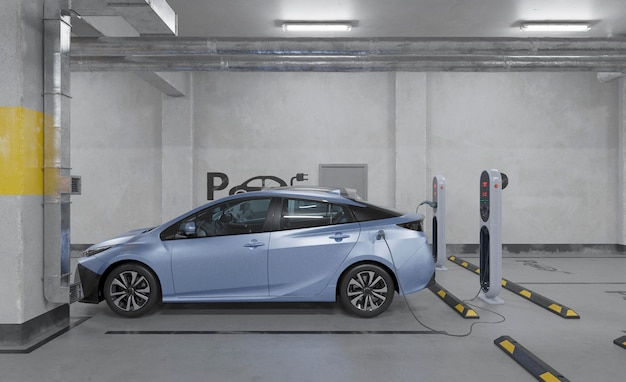
Charging is evolving rapidly in the United States. Tesla has essentially secured its position as the leader in charging connectors, which means charging will become much more convenient soon. Additionally, charging networks are expanding rapidly, with companies like Mercedes-Benz entering the fray.
Earlier this year, Mercedes announced a collaboration with MN8 Energy to build charging stations. Recently, they revealed plans to open the first of these stations in October, starting in Atlanta. So, while you can’t plan a long road trip just yet, it’s a good moment to assess the current state of charging in the U.S. How much progress have we made, and what still needs to be done?
In the U.S., several major charging networks dominate the landscape. The largest is ChargePoint, offering a vast number of Level 2 chargers and a smaller selection of DC fast chargers. For DC fast charging, the most extensive network is the Tesla Supercharger network, with chargers capable of delivering up to 250 kilowatts—the maximum charging speed for Teslas. The experience is seamless for Tesla owners, who don’t need to pay each time they charge, as the charger communicates directly with the car, which already has the payment information stored.
Next up are Blink and SemaConnect, known for their extensive networks of Level 1 and Level 2 chargers. Electrify America comes second to Tesla for DC fast chargers. Other significant players include EVgo and EV Connect.
New entrants could potentially disrupt the market. If Mercedes can build a comprehensive network, it might offer an even better charging experience, especially as faster-charging vehicles become available. Mercedes claims its chargers will provide up to 400kW, outpacing current options and potentially fully charging a car in just 10 to 15 minutes, provided the car supports that speed.
So, where’s the best place to live if you own an electric car? The answer is pretty clear—California. According to the U.S. Department of Energy, California has 14,997 public charging stations, far outpacing New York’s 3,534. Given California’s larger population and high rate of EV ownership, this makes sense. Florida comes in third with 2,876 stations.
These numbers are expected to rise significantly over time, as a small percentage of U.S. drivers currently own electric cars. Even though many will charge at home, we’ll still need robust public charging infrastructure.
Electric car adoption is speeding up, and the demand for charging stations is growing rapidly. According to S&P Global Mobility, by 2027, the U.S. will need approximately 1.2 million Level 2 chargers and 109,000 Level 3 chargers. This requirement will escalate dramatically by 2030, when it’s projected that 40% of new vehicles will be electric. By that year, S&P estimates the need for 2.13 million Level 2 chargers and 172,000 Level 3 chargers.
Currently, the U.S. has about 126,500 Level 2 chargers and 20,432 Level 3 chargers, not including Tesla’s 16,822 chargers. Even with Tesla’s chargers, we’re still far from meeting the projected needs.
In summary, we have a long journey ahead. As long as companies adhere to EV charging standards, more chargers and more charging companies will be beneficial. Hopefully, EV manufacturers will also find ways to make the charging process more seamless—similar to using a Tesla charger. A widespread adoption of the Tesla NACS port could potentially facilitate this.